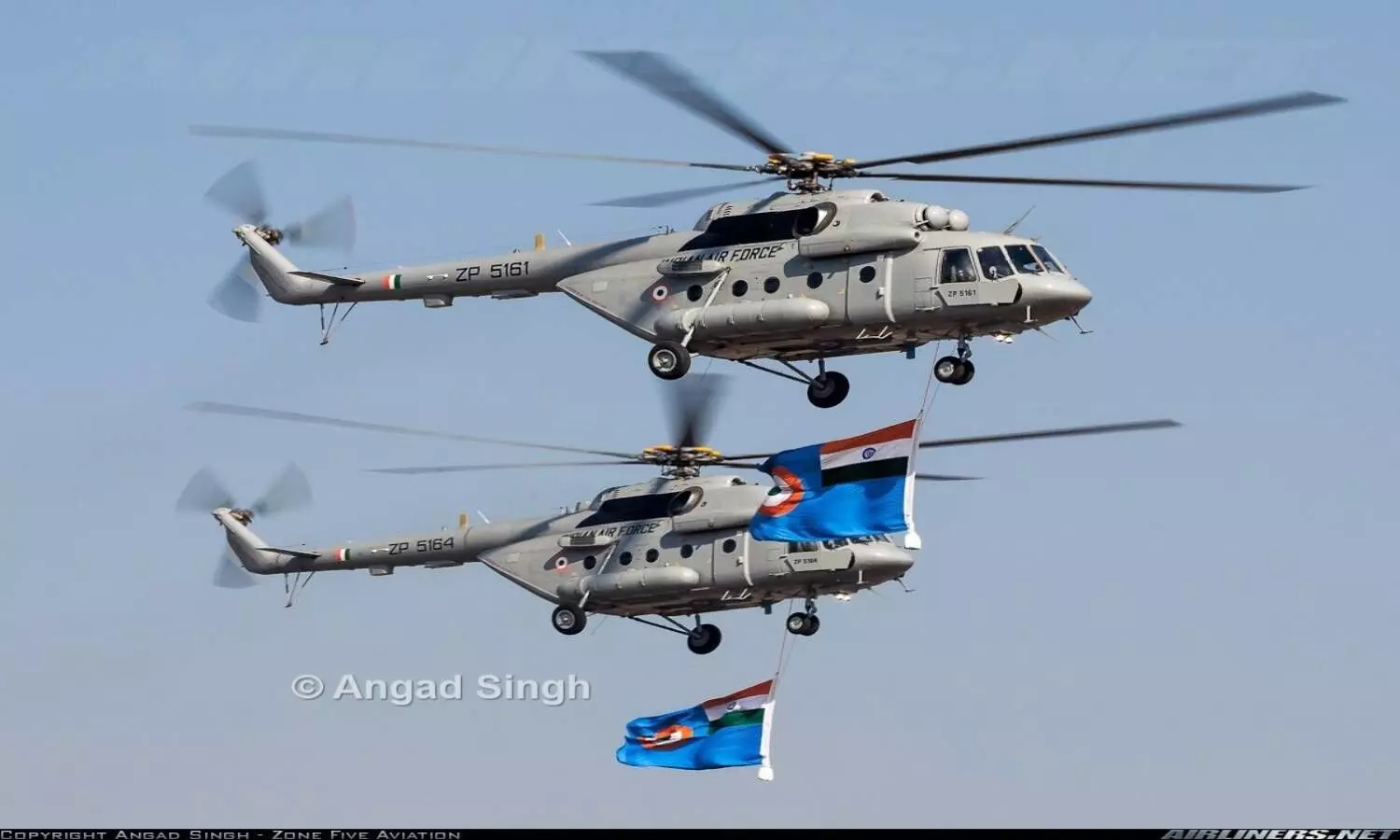MI-17 chopper: A Russian-built machine that Indian armed forces love to fly
The Mi-17 has accomplished numerous transport, rescue and combat missions during its service in the Indian Air Force and more widely.
By K.S Nair
Hyderabad: The Mil Mi-17 helicopter, a development of the earlier Mi-8, is a robust, reliable Russian-built helicopter. It is numerically the most produced helicopter in the world, with over seventeen thousand examples having been delivered. It is also the most numerous helicopter type in use with the Indian armed forces; reliable neutral sources say the Indian Air Force currently operates over 220 of them. It is regularly used for VIP transport, including of the President and Prime Minister of India. And the updated Mi-17V5 sub-variant, which India started to receive in 2013, includes avionics specially designed for India.
The Mi-17 has accomplished numerous transport, rescue and combat missions during its service in the Indian Air Force and more widely. As one small item of aviation history in India, it was involved in one of the most picturesque rescue missions in 1992. The Indian Air Force and Indian Army undertook the rescue of ten passengers stranded in a cable car in Himachal Pradesh, stuck 1,300 feet in the air, in a valley that was difficult to access.
The initial rescue attempt was made by another helicopter type, a French-design, but the shape of the valley, and the limited length of the rescue cable that it could carry, made it impossible for that helicopter to carry out the rescue – its rescue cable simply could not reach far enough into the valley. It was a Mi-17, with its greater power and longer rescue cable carrying capacity, which eventually rescued the passengers in the cable car.
The Mi-17 which carried out that rescue was flown, as it happens, by then-Group Captain Fali H Major. He was decorated with the Shaurya Chakra, India's third-highest peacetime gallantry award, for the rescue. Group Captain Major went on to become an Air Chief Marshal and the Chief of the Air Staff, fifteen years later. He appears occasionally on television commenting on aviation matters.
Since the unfortunate accident which took the life of General Bipin Rawat, the Chief of Defence Staff, his wife, and nearly a dozen others, there have been some questions raised as to its safety. These are ill-informed, to put it mildly. For the number of Mi-17s that are operating, the intense flying commitments that they meet, and the harsh conditions under which they operate, its record is unimpeachable. The promptness with which informed commentators (including practitioners with literally thousands of hours' flying and maintenance experience on the type) have rebutted such suggestions should be sufficient.
The tragic Mi-17 loss on 8 December (ironically, 8 December is the anniversary of one of the most imaginative helicopter operations undertaken by the Indian Air Force, the crossing of the Meghna river during the Bangladesh Liberation War of 1971) is a salutary reminder that for all the advances in aviation and aviation safety, and the statistical safety of air travel, mishaps can still occur. This mishap should and will be investigated, and lessons will be drawn. Until then, the best thing the rest of us can do is refrain from speculation.
Picture Credit : Angad Singh